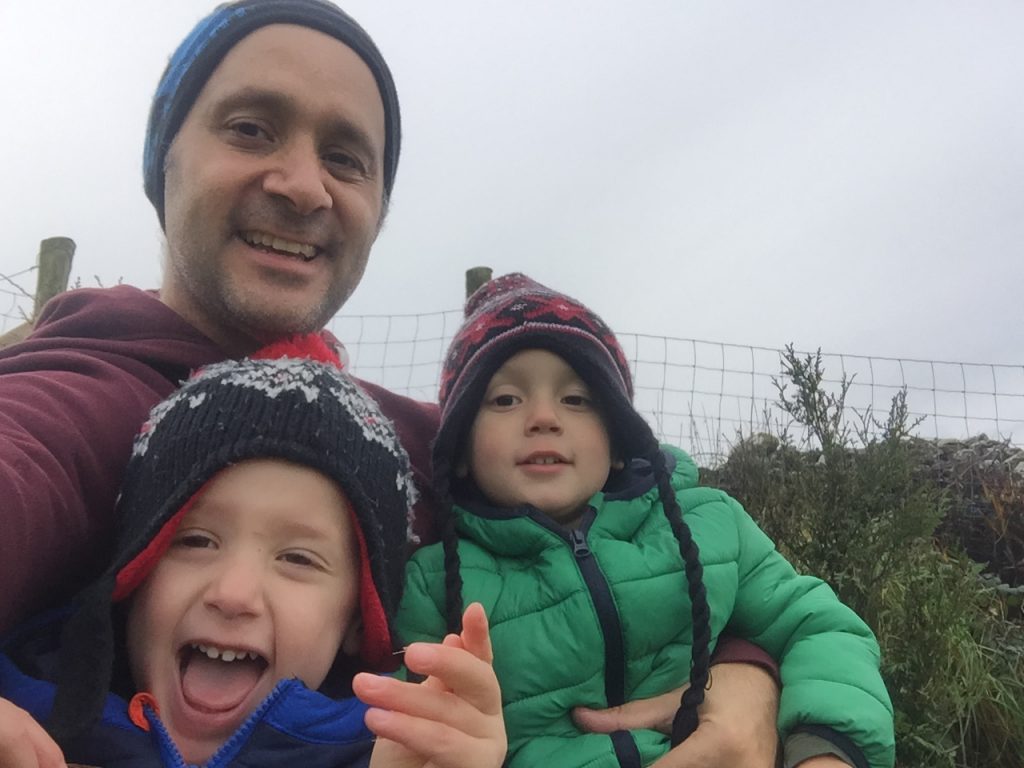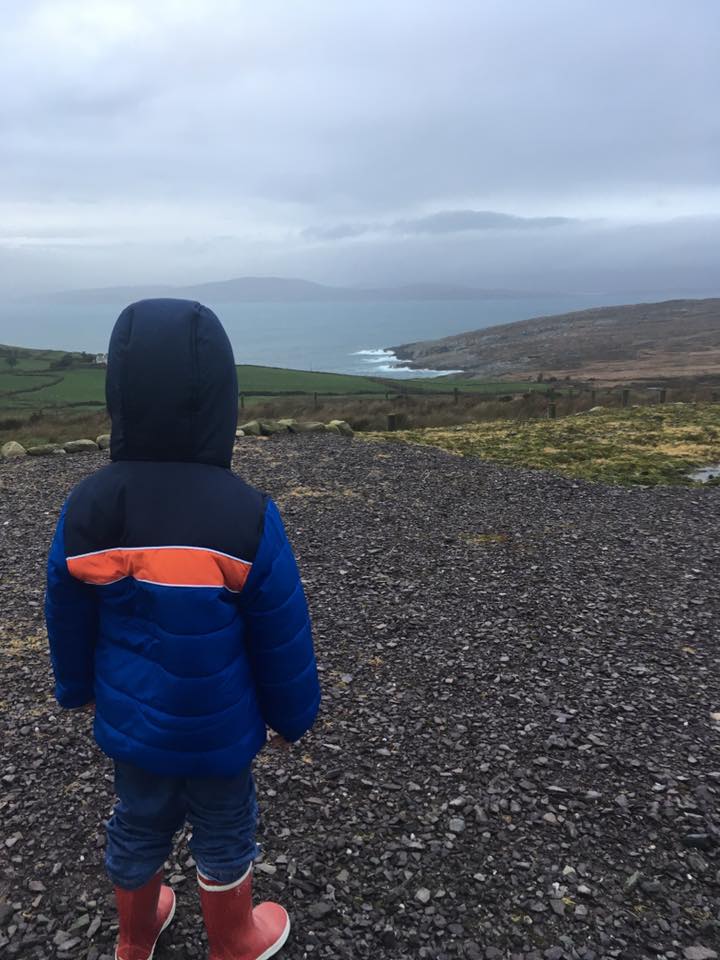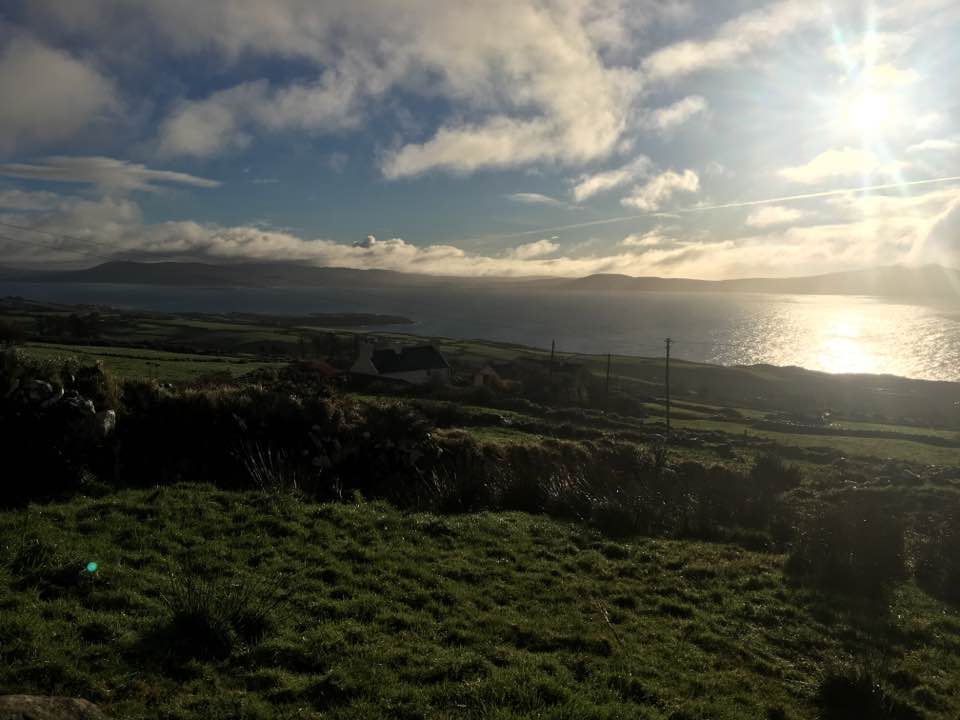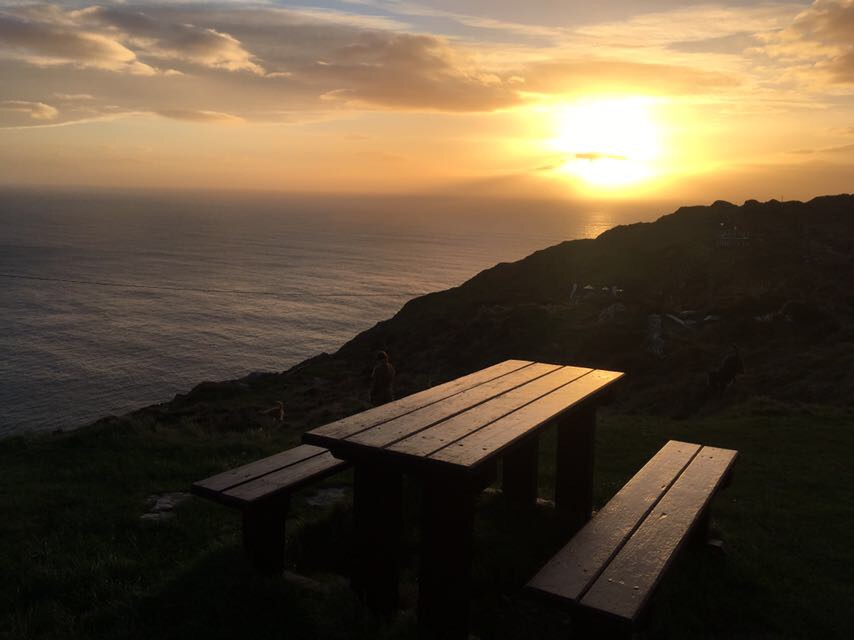“THAT’S out there!”
This is the jovial assessment of Eileen, the owner of Eileen’s Pub in Kilcrohane, Co. Cork of our home overlooking Bantry Bay in Rhea, a bucolically remote hilltop just 10 minutes removed from this intimate village of roughly 100 residents where she now serves us beers.
Eileen surveys her cozy domain - complete with a blazing fireplace - from her busy perch behind the bar as a dozen or so giddy - and thirsty - locals watch Ireland battle Denmark in a World Cup qualifying match, which they ultimately, unfortunately, lost.
Charley, a stocky, grey-haired, cherubic Irishman whose large eyes, crimson cheeks and smile all ooze warmth, promptly chimes in, his glass of red wine within arm’s reach. His casual slacks, scarf and thick sweater complete an idyllic, grandfatherly frame that would easily complement any Irish sitting room.
“I live at the fork near Poet’s Way,” he says, his speech flavoured by a rich Irish accent owned by most in these parts.
His home is just down a winding dirt road from our house, which peers over a deeply green hillside dotted with sporadic cows and sheep at a glisteningly Bantry Bay and the hypnotic hills of the Beara Peninsula.
The third and final village on the Sheeps Head Peninsula, a narrow strip of land in southwest Ireland that extends for a few dozen miles out into the North Atlantic like a thin, outstretched finger, Kilcrohane is, ironically, also very much “out there.”
 Keith Perkins, with his twin boys, during their three-month relocation to Co. Cork
Keith Perkins, with his twin boys, during their three-month relocation to Co. CorkA few weeks into a three-month teaching sabbatical here, this Verona, New Jersey native already counts the village’s two pub owners, the general store owner, a local handyman, a retired Wisconsin mayor and a motley assortment of other locals among my short list of acquaintances.
Life meanders at a crawl here, but friendships are amassed with swift alacrity.
Paddy, a short, grey-haired cheerful soul, who owns the Bayview Pub with his wife Mary since 2002, deftly tops off another beer as Frank, the owner of the general store who also doubles as the village postmaster, slowly shakes his head on an adjacent stool.
“He’s been here forever and he doesn’t know anything,” Frank says, playfully mocking this long-time local’s inability to enlighten me on my inquiry regarding the Mizen Peninsula, visible to the south of Kilcrohane over Dunmanus Bay.
Paddy offers an acquiescing smile, seemingly as comfortable manning his myriad taps as his native Joyce and Heaney were in generating their voluminous and celebrated prose.
In our brief wanderings of this remarkable swath of Irish soil, it’s easy to forgive Paddy’s dearth of knowledge of his peninsular neighbors to the south.
 One of the Perkins twins looks out over Bantry Bay
One of the Perkins twins looks out over Bantry BayAnchored by the village of Durrus at the head of the Sheeps Head Peninsula, one follows the often narrow, pebble-strewn peninsula road southwest through the village of Ahakista before reaching Kilcrohane.
A sumptuous visual buffet, it’s a journey of contrasts.
At Durrus, the pristine waters at the head of the Dunmanus Bay reveal themselves.
This inaugural watery vista broadens as the Mizen and Sheeps Heads Peninsula shores slowly separate on their respective journeys out into the North Atlantic.
To the left as one travels southwest is the ever-widening blue-gray canvas of Dunmanus Bay.
Depending on the fickle Irish weather, the bay varies from a splendid blue to assorted shades of soothing greys.
Rising from the Dunmanus Bay shoreline are a blend of richly green slopes that surrender to areas of high brown grass and rocks that reach modest summits of varying heights along the entire spine of the peninsula.
Just outside Kilcrohane is Mt. Seefin, the highest of these peninsular summits — rising to 1,131 feet and offering enviable vistas of both Dunmanus Bay to the south and Bantry Bay to the north.
Cows and sheep roam the fields the length of the peninsula and sporadic houses stake their hillside claim to inspiring vistas that seem to demand periods of deferential silence.
There are no villages south of Kilcrohane, yet the peninsula continues for another five miles or so, culminating in a stoic, whitewashed lighthouse perched precariously atop a rocky ledge marking the peninsula’s southernmost point.
Attaining this admirable “end of Peninsula” prize requires a mildly exerting, hilly walk of over a mile from a small parking lot to the base of the steep lighthouse steps.
Once gained, surrounded by the greens and browns of nature at its rawest, the open North Atlantic fully beckons and the Irish saying concerning this region can be best appreciated: “Next parish, Manhattan!”
Yet unlike that urban stew of 8 million people, Kilcrohane lulls one into a state of blissful lethargy. The gently rolling hills of vivid green conspire with a willing sea to subdue even the most frayed of nerves.
 An early morning snap of the sun rising over Dunmanus Bay
An early morning snap of the sun rising over Dunmanus BayIt’s an antidote for many ills that would sell swiftly on that other distant “parish” of light and noise.
It’s now mid-morning and we’re driving down a narrow dirt lane towards the cove, a series of rocky outcrops that are visible even from the large rear windows of our nearby home up the hill behind us.
Kurt, a greying, bespectacled, cheerful local, is standing at the edge of the road.
“I’m minding the sheep,” he tells us amiably as several of them dutifully linger behind a gate, a few feet from our car. He shares a few stories of some unfortunate souls who ventured too close to the cove’s waters, which stir angrily just out of sight down a sloping path.
Rogue waves strike with no warning here and it’s a bleak outlook for anyone who gets swept into these churning waters.
In 1979, Irish novelist J.G. Farrell was one such victim who was silenced too soon, at the age of 44, while fishing on the treacherous rocks of Bantry Bay not far from where Kurt now minds his sheep.
Driving off, I peer through the rear-view mirror at my twin toddlers Colin and Kyle - silently vowing to keep them away from the perilous peninsular coastline.
 The sunset at Sheeps Head
The sunset at Sheeps HeadWe soon approach a car travelling down the narrow lane.
I back our car up a few feet onto the grass to allow it to pass. The driver and I exchange the traditional Irish salute—a slight raising of the index finger as a message of conciliation and greeting.
Continuing the short drive home with my wife Emily and two sons, I look ahead at the brown and rocky hills and sloping green fields that melodiously undulate across this enchanting place.
Eileen was right. Our temporary home on this windswept Irish hill is indeed “out there”.
May it forever stay that way.
(Having decided to take a sabbatical from his role as a high school English teacher in New Jersey last year, Keith Perkins relocated to Ireland, with his wife and twin toddlers in tow, for three months)

